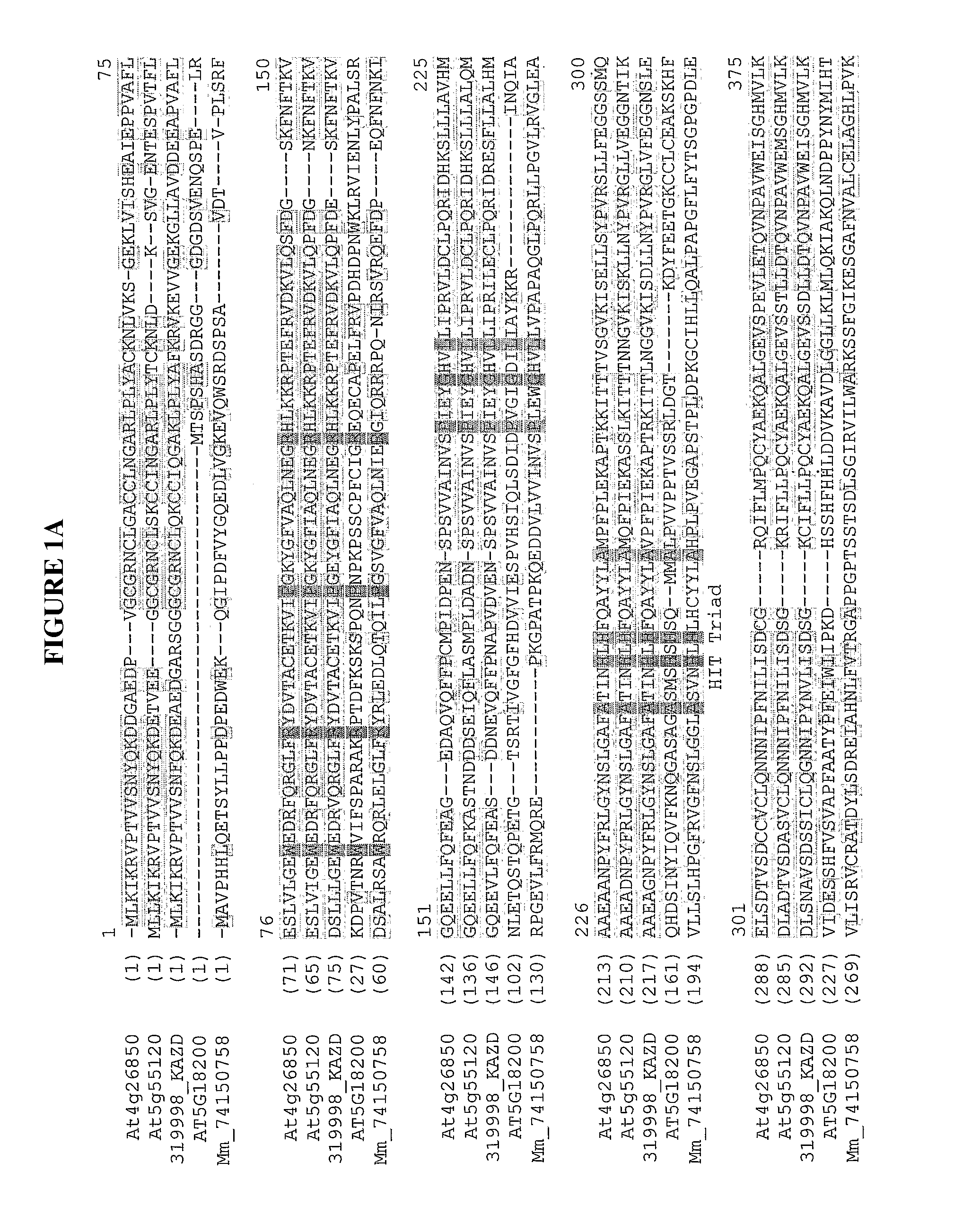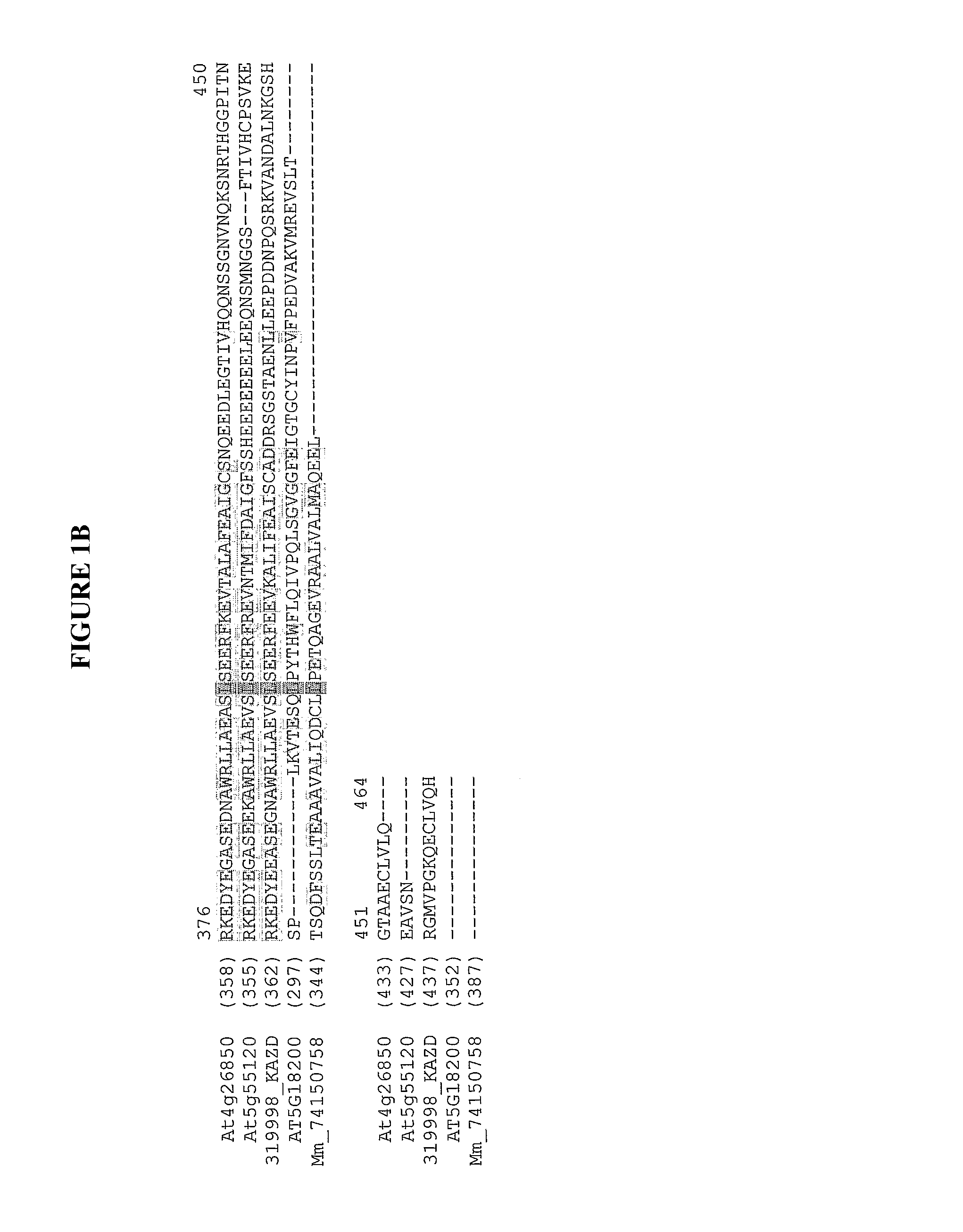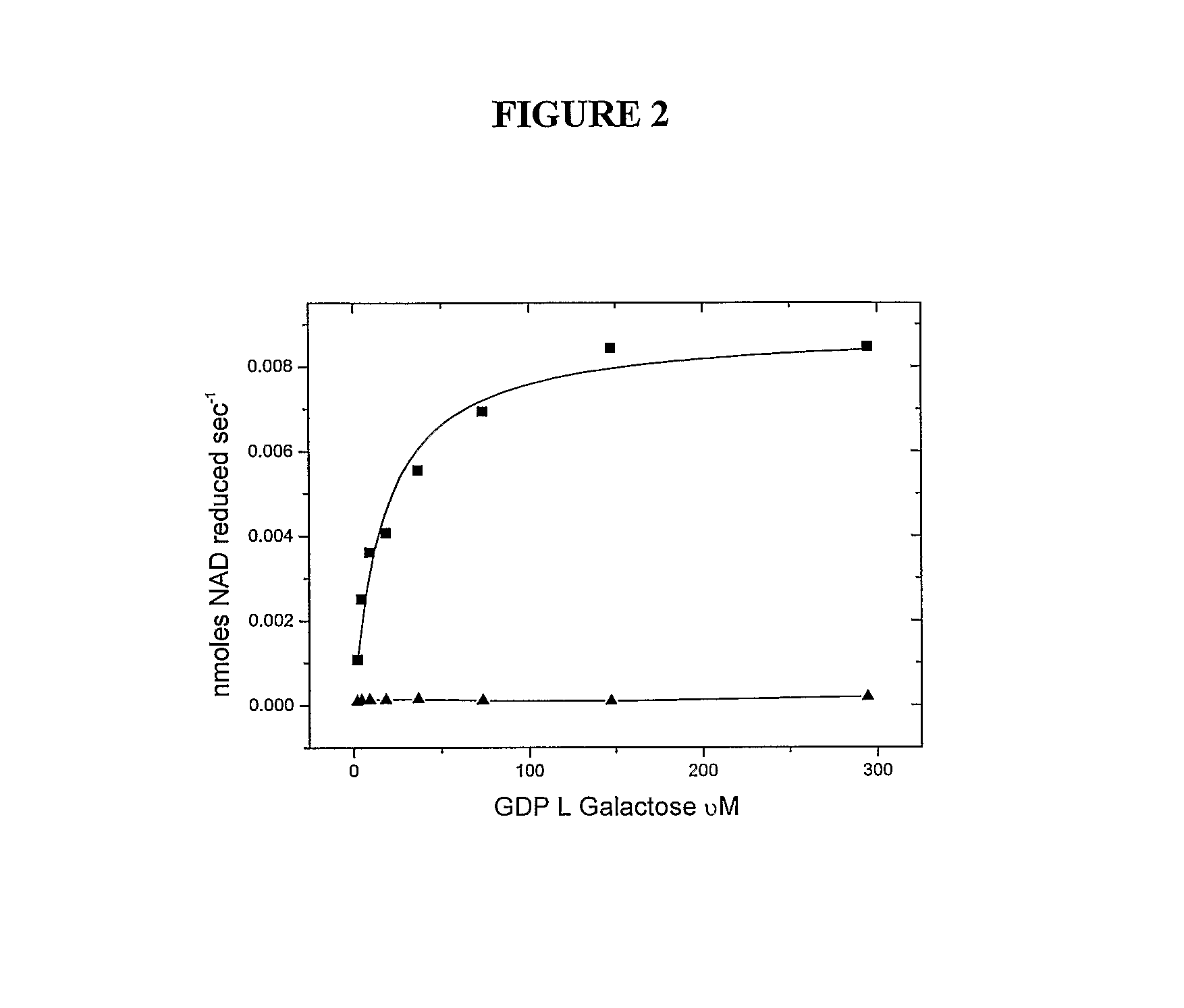Transferases, epimerases, polynucleotides encoding these and uses thereof
a technology of polynucleotide encoding and transferases, applied in the field of transferases, epimerases, polynucleotides encoding these, can solve the problems of large variability in ascorbate content found in non-green edible plant tissues, reduced ascorbate, increased ascorbate, etc., and achieves the effect of reducing activity
- Summary
- Abstract
- Description
- Claims
- Application Information
AI Technical Summary
Benefits of technology
Problems solved by technology
Method used
Image
Examples
example 1
Identification of a Putative Homologue of Arabidopsis thaliana At4g 26850 from Kiwi Fruit
[0601]Blast searches using At4g26850 of a Horticultural and Food Research Institute of New Zealand proprietary Actinidia EST database revealed 120 ESTs with homology to AT4g26850 out of over 132,000 ESTs. These came from a range of tissues including petals, fruit, buds and meristems and leaves. The applicants selected EST 319998 from an Actinidia chinensis young fruit library. The two Arabidopsis proteins and the kiwifruit protein showed 71 to 75 percent identity to each other. The sequences were aligned using ClustalX (Clustal X (Jeanmougin et al., 1998) as shown in FIGS. 1A-1B.
example 2
Use of Bioinformatic Analysis to Reveal a Putative function for At 4g 26850 as a GDP-L-Galactose-guanyltransferase
Similarity and Motif Searches.
[0602]PSI Blast (Altschul et al., 1997; Schaffer et al., 2001) was run for 6+ iterations and identified genes further examined for their annotations. Motif searching was done using MEME (Bailey and Elkan, 1994) using a set of genes as input selected (At4g26850 and HIT members including GaIT).
[0603]Through BLASTp searches for genes encoding proteins similar to the predicted protein sequence of the uncharacterised Arabidopsis gene At4g26850 the applicants initially detected only other plant genes that were also annotated as similar to At4g26850. However, further into the list of matched genes were members of the Interpro HIT family (IPR001310) of proteins, that are characterised as nucleotide-binding proteins and hydrolases. The family includes diadenosine tetraphosphate (Ap4A) hydrolase and GaIT (D-Galactose-1-phosphate uridyl transferase, cl...
example 3
Expression of Kiwifruit GDP-L-Galactose Guanyltransferase EST 319998 and Arabidopsis thaliana At4g26850 in E. coli and Characterization of Enzymatic Activity
Materials and Methods
[0609]Expression of genes in E. coli. The EST 319998 from young fruit of Actinidia chinensis and At4g26850 were each cloned into pET30A (Novagene, USA), their sequence checked and expressed in E. coli. The N terminal His6 tag was used to purify the protein. An empty vector control was expressed and purified in parallel. Techniques were essentially as described earlier (Laing et al., 2004). In much of this work the His-protein was further purified on a 5 mL HiTrap Q FF column (GE Healthcare), and identical results were obtained with both preparations.
Coupling Enzymes:
[0610]L-Galactose dehydrogenase (Gen Bank accession AA018639 (EST 56121), 1.5 ug / assay) was cloned from an EST derived from an A. deliciosa (kiwifruit) shoot bud library with a maltose binding protein presequence and assayed as described previous...
PUM
| Property | Measurement | Unit |
|---|---|---|
| Tm | aaaaa | aaaaa |
| pH | aaaaa | aaaaa |
| total volume | aaaaa | aaaaa |
Abstract
Description
Claims
Application Information
 Login to View More
Login to View More - R&D
- Intellectual Property
- Life Sciences
- Materials
- Tech Scout
- Unparalleled Data Quality
- Higher Quality Content
- 60% Fewer Hallucinations
Browse by: Latest US Patents, China's latest patents, Technical Efficacy Thesaurus, Application Domain, Technology Topic, Popular Technical Reports.
© 2025 PatSnap. All rights reserved.Legal|Privacy policy|Modern Slavery Act Transparency Statement|Sitemap|About US| Contact US: help@patsnap.com



